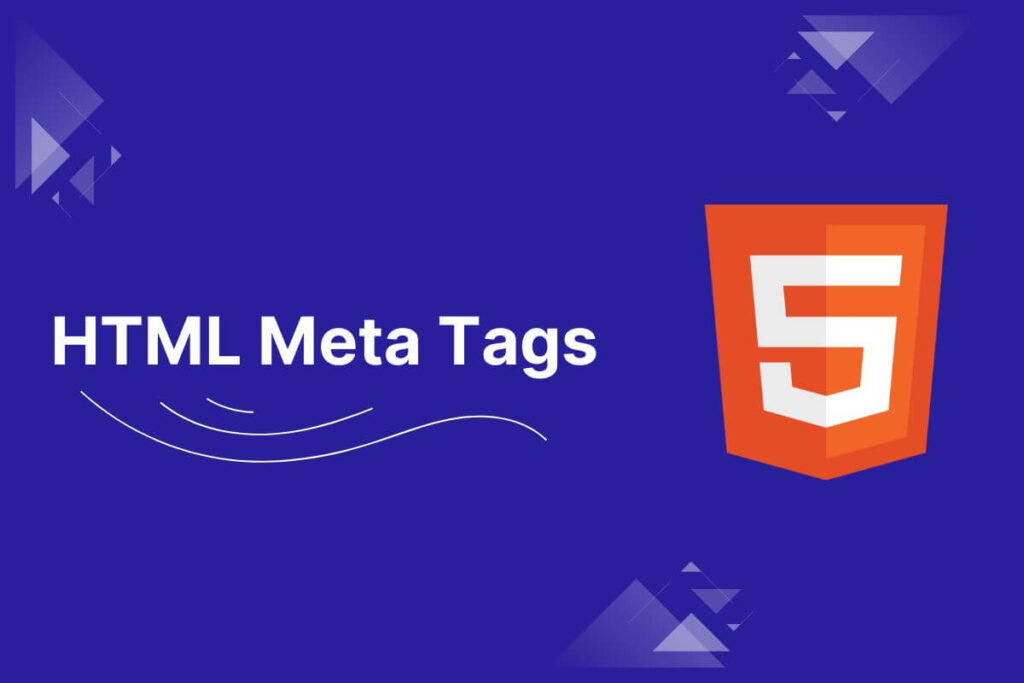In the world of web development, HTML (Hypertext Markup Language) plays a crucial role in structuring and displaying content on web pages. However, there is a lesser-known aspect of HTML that often goes unnoticed by many – the meta tags.
These tiny snippets of code, nestled within the <head> section of an HTML document, act as powerful tools for providing metadata about a web page. Metadata is essentially data about data, and in the context of web pages, it helps convey crucial information to web browsers, search engines, and other services.
Key Meta Tags and Their Functions
1. Title Tag
The title tag defines the title of a webpage, which appears in the browser’s title bar or tab. It is a critical element for search engine optimization (SEO) and user experience.
<title>Example Website - Home</title>
2. Meta Description Tag
This tag provides a summary of the webpage’s content. Search engines often use this information to display snippets in search results.
<meta name="description" content="Explore our website for a variety of informative articles and engaging content.">
3. Meta Keywords Tag (Deprecated)
Historically, this tag was used to specify keywords related to the webpage’s content. However, major search engines no longer consider it for ranking purposes.
<!-- Not recommended, as it is deprecated -->
<meta name="keywords" content="web development, HTML, meta tags">
4. Viewport Tag
Essential for responsive web design, the viewport tag ensures that the webpage adapts to various device screens, improving the user experience on mobile devices.
<meta name="viewport" content="width=device-width, initial-scale=1.0">
5. Charset Tag
Specifies the character set used for the HTML document. Using UTF-8 ensures compatibility with a wide range of characters.
<meta charset="UTF-8">
Adding Meta Tags to Your Documents
Meta tags are HTML or XHTML elements that provide information about a web page. They are placed in the head section of an HTML document and are not visible to users when they view the page. Meta tags are crucial for search engine optimization (SEO) and can also be used for other purposes, such as specifying the character set for the document.
Here are some common meta tags and their purposes:
1. Document Type:
Specifies the HTML version being used. For modern web pages, HTML5 is commonly used.
<!DOCTYPE html>
2. Charset:
Declares the character encoding for the document. UTF-8 is widely used and supports a wide range of characters.
<meta charset="UTF-8">
3. Viewport:
Helps make the web page responsive on various devices by setting the viewport width and initial zoom level.
<meta name="viewport" content="width=device-width, initial-scale=1.0">
4. Description:
Provides a brief description of the page’s content. Search engines may use this in search results.
<meta name="description" content="A concise and accurate description of the page content.">
5. Keywords:
Specifies a list of keywords related to the page’s content. However, many search engines no longer use this tag for ranking.
<meta name="keywords" content="keyword1, keyword2, keyword3">
6. Author:
Indicates the author of the document.
<meta name="author" content="Author Name">
7. Viewport for Responsive Design:
Helps in rendering the page properly on different devices.
<meta name="viewport" content="width=device-width, initial-scale=1.0">
8. Robots:
Instructs search engine crawlers on how to index and follow links on the page.
<meta name="robots" content="index, follow">
Here’s an example of how you can combine these meta tags in the head section of an HTML document:
<!DOCTYPE html>
<html lang="en">
<head>
<meta charset="UTF-8">
<meta name="viewport" content="width=device-width, initial-scale=1.0">
<meta name="description" content="A concise and accurate description of the page content.">
<meta name="keywords" content="keyword1, keyword2, keyword3">
<meta name="author" content="Author Name">
<meta name="robots" content="index, follow">
<title>Your Page Title</title>
</head>
<body>
<!-- Your page content goes here -->
</body>
</html>
Common Mistakes to Avoid
1. Duplicate Meta Tags
Each meta tag should be unique to its page. Avoid using the same title or description across multiple pages.
2. Ignoring Character Set
Ensure the charset meta tag is present and set to UTF-8 to handle a diverse range of characters.
3. Overloading with Keywords
While keywords are important, avoid keyword stuffing. Write content and meta tags for users, not just search engines.
4. Neglecting Mobile Optimization
With the increasing use of mobile devices, ensure the viewport tag is used to optimize the website’s display on various screens.
HTML meta tags are the unsung heroes of web development, providing crucial information to browsers, search engines, and social media platforms.
When utilized effectively, meta tags can significantly enhance a website’s visibility, user experience, and overall performance. By understanding the purpose of key meta tags and implementing best practices for SEO, developers can unlock the full potential of these hidden lines of code, contributing to a more successful and user-friendly online presence.


